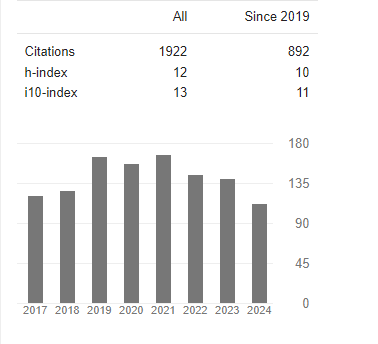Dielectric, Electrical Conductivity Behavior and Molecular Modeling of Some Pyrimidine and Purine Compounds
Abstract
MS Masoud, M Sh Ramadan, AM Sweyllam and MH Al-Saify
The dielectric and electrical conductivity measurements for biologically active nucleic acid compounds reveal semiconducting properties and small relaxation times. On the basis of electronic transition within molecules, two pathways for the conduction of electricity may be expected. The first conducting process occurring in the lower temperature region is attributed to n→π* transitions which require less energy to be performed. In the upper temperature region, conduction could be attributed to π→π* transitions which need more energy to participate in electronic conduction. The observed increment of conduction in the upper temperature region may be attributed to interactions between n→π* and π→π* transitions. Quantum chemical parameters such as the highest occupied molecular orbital energy (EHOMO) and the lowest unoccupied molecular orbital energy (ELUMO) were given using molecular modeling. Energy gap (ΔE) and parameters which give information about the reactive chemical behavior of compounds such as electronegativity (χ), chemical potential (µ), global hardness (η), softness (σ) and electrophilicity index (ω) were calculated



